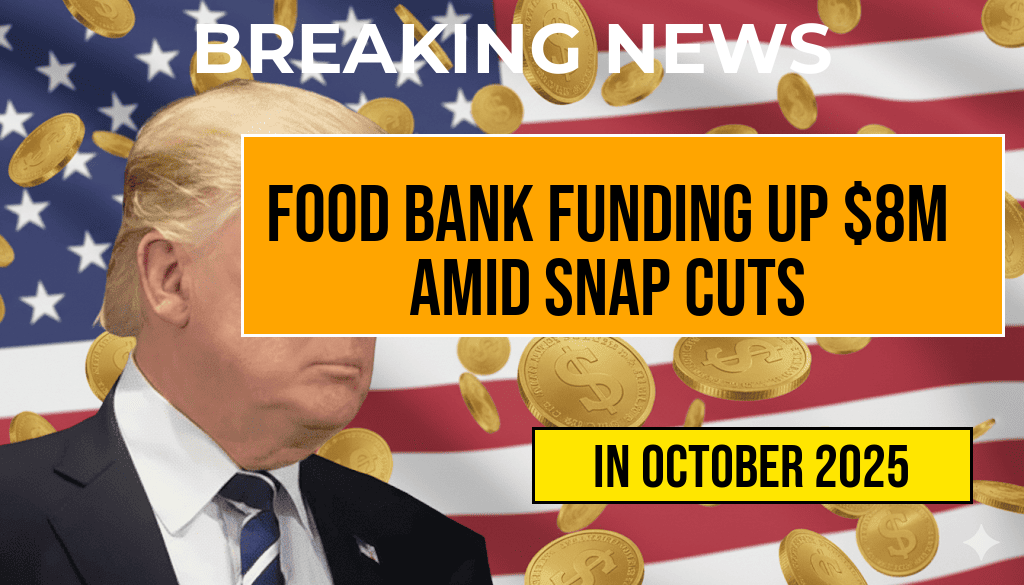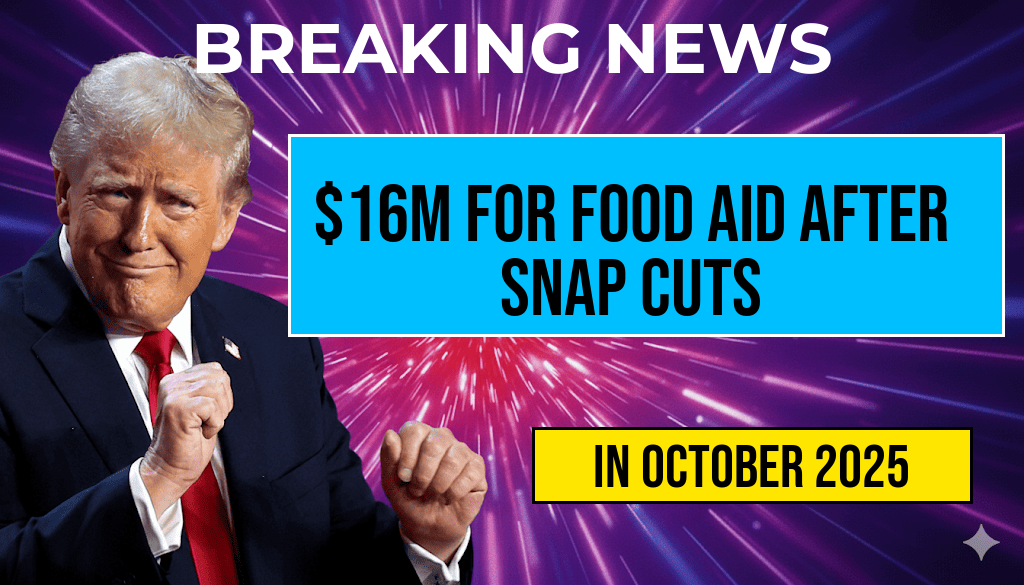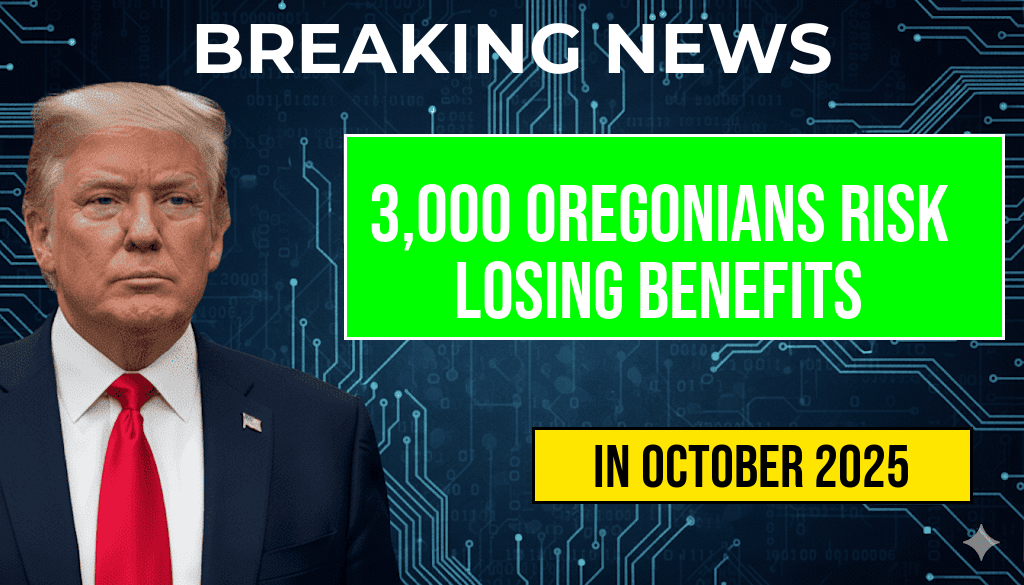Amid a backdrop of significant reductions in Supplemental Nutrition Assistance Program (SNAP) benefits, recent federal allocations have increased funding for food banks by $8 million. This boost aims to bolster community support networks that are increasingly relied upon as households face tighter food assistance thresholds. The combined impact of SNAP cuts and increased food bank funding reflects ongoing shifts in national food security strategies, underscoring both the resilience and vulnerabilities within the social safety net. While the SNAP reductions are projected to save billions annually, advocacy groups warn that diminished benefits could heighten demand at local food banks, prompting the federal government to respond with targeted financial support. According to recent data, the increase in food bank funding is expected to cover expanded operational costs and enhance emergency food supplies across multiple states, providing critical relief during a period of economic uncertainty.
Background on SNAP Reductions and Food Security Challenges
The SNAP program, formerly known as food stamps, remains the largest federal assistance initiative aimed at reducing hunger among low-income Americans. However, policy shifts over recent months have resulted in notable benefit cuts, with some households losing up to $100 per month in assistance. These reductions stem from changes in eligibility criteria and the expiration of temporary COVID-era provisions, which historically expanded access during economic downturns. Experts warn that such cuts are likely to strain household budgets, forcing families to prioritize other essentials over nutritious food. The SNAP program’s evolving landscape continues to provoke debate about balancing fiscal responsibility with social support needs.
Federal Response: Increased Funding for Food Banks
In response to anticipated surges in demand at food banks, the federal government announced an $8 million increase in funding allocated to community food assistance programs. This funding is part of a broader initiative to address the growing shortfall in food security caused by recent benefit reductions. The additional resources are earmarked for expanding food inventory, upgrading distribution infrastructure, and supporting staffing needs at local food banks. According to the Department of Agriculture (USDA), this funding aims to ensure that emergency food providers can meet the rising demand without compromising service quality.
Impact on Local Food Banks and Communities
| Region | Funding Allocated | Projected Impact |
|---|---|---|
| Northwest | $2 million | Expanded food supplies and outreach programs |
| South | $3 million | Improved distribution logistics and emergency pantry support |
| Northeast | $2 million | Enhanced staffing and inventory management |
| Midwest | $1 million | Community outreach and mobile food distribution |
Local food banks, already stretched thin by increased demand in recent months, are preparing for a sustained influx of clients. Many organizations report that the benefit reductions have led to longer lines and larger per-visit food requests. Food insecurity advocates emphasize that while federal funding offers critical relief, it may only be a temporary buffer if SNAP benefits continue to decline or if economic conditions worsen.
Community Responses and Policy Implications
Advocacy Groups Call for Reassessment
- Organizations such as Feeding America have urged policymakers to revisit benefit cut policies, citing potential long-term health consequences for vulnerable populations.
- Some states have temporarily increased state-funded assistance programs to mitigate the impact of federal reductions.
Federal and State Collaboration
- State agencies are coordinating with food banks to streamline distribution and identify areas with the highest need.
- Federal initiatives include targeted outreach to ensure that eligible households are aware of available resources, including expanded food bank services.
Looking Ahead: Ensuring Food Security Amid Uncertainty
While the infusion of $8 million provides a crucial lifeline for food banks, many experts warn that sustainable solutions require comprehensive policy adjustments. The ongoing debate centers around balancing fiscal responsibility with the moral imperative to support food-insecure Americans. As economic indicators suggest persisting inflation and employment challenges, the role of community-based food assistance becomes even more vital.
Further research and monitoring will be essential to evaluate the effectiveness of increased funding and the resilience of food security programs. Stakeholders continue to advocate for policies that protect vulnerable populations from the adverse effects of benefit cuts, emphasizing that robust support systems are fundamental to community well-being. For additional insights, see USDA SNAP operations and Feeding America.
Frequently Asked Questions
What is the reason behind the increase in food bank funding?
The eight million dollar increase in funding is a response to recent SNAP reductions that have reduced assistance for many families, prompting additional support for food banks to meet the increased demand.
How much has SNAP been reduced?
The article details a reduction of X dollars in SNAP benefits, which has led to greater reliance on food banks for vulnerable populations.
Who will benefit from the additional funding?
The funding boost is intended to support food banks and community organizations, ensuring they can better serve individuals and families affected by SNAP cuts.
What impact do SNAP reductions have on food security?
SNAP reductions can lead to increased food insecurity, making it essential for food banks to receive additional funding to bridge the gap in assistance.
Are there any plans for future funding adjustments?
The article does not specify future funding plans, but the current increase highlights a response to immediate needs caused by SNAP reductions.








